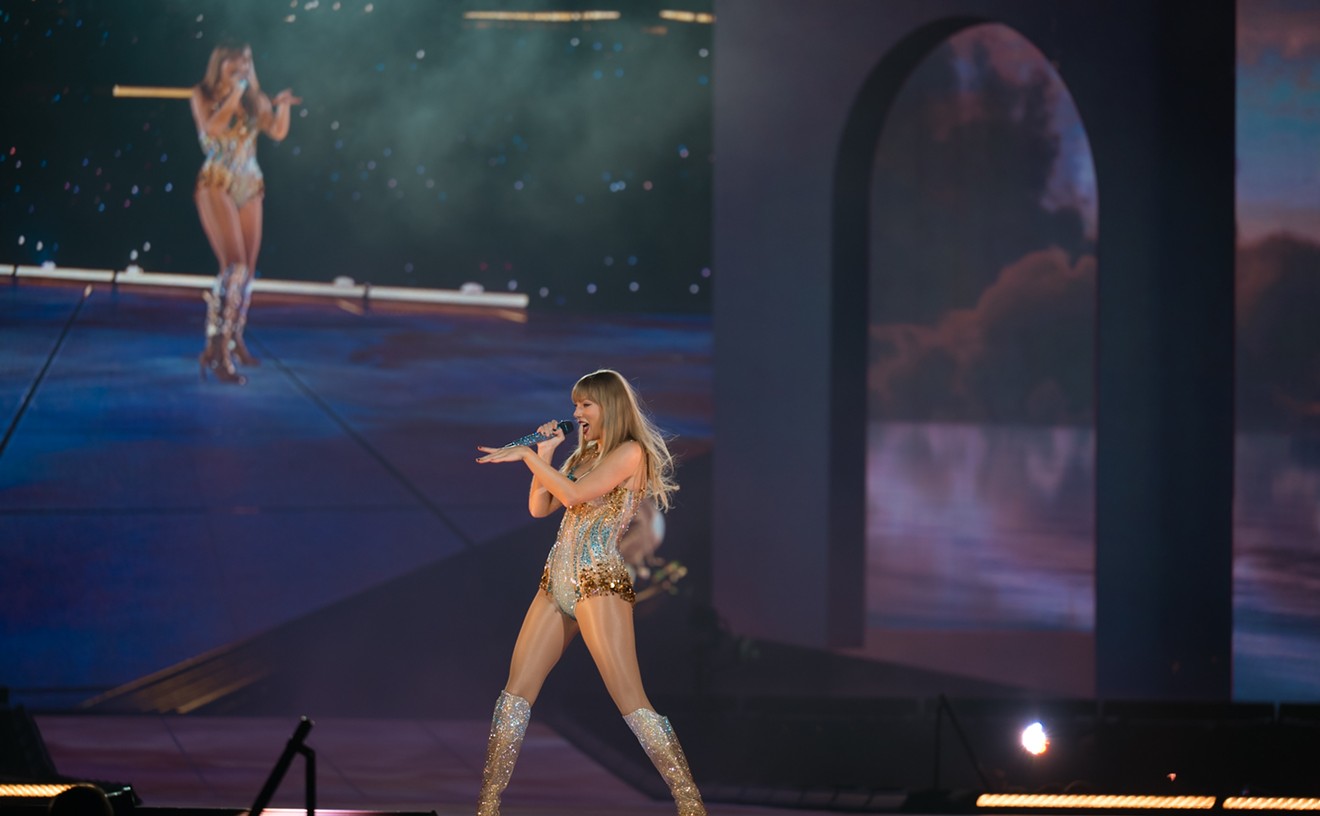Named for the spot in Christian fundamentalist hell where sinners are condemned to spend eternity, Tony Kaye's Lake of Fire is a provocatively beautiful movie on the hottest hot-button issue in American life: a woman's right to an abortion.
The British-born Kaye, an enormously successful maker of deluxe TV commercials, relocated to the United States in the early '90s and has been crusading ever since. Having directed Edward Norton to what would be an Oscar-nominated performance as a SoCal neo-Nazi skinhead in the 1998 American History X, Kaye fought with his studio over the movie's final cut. He then ran himself out of the industry with a monumental tantrum that included yanking American History X from the Toronto International Film Festival, buying 35 full-page ads to denounce his producer in the trades and suing the Directors Guild. (After 9/11, Kaye nearly got himself thrown out of the country by dressing up as Osama bin Laden for a stand-up comedy act.)
Stable, no; persistent, yes; megalomaniacal, undoubtedly; eccentric, very—and also something of a visionary: 17 years in the self-financed making, Lake of Fire may be as daringly aestheticized as any social documentary since Errol Morris' The Thin Blue Line. Despite its surface sheen, however, Lake of Fire is hardly detached from the passions it records. This surprisingly fluid and continuously engaging two-and-a-half-hour movie, which Kaye shot himself in luminous black-and-white and almost entirely in 35mm, is at once monumental and ghostly, further dematerialized by Anne Dudley's ethereal score.
Lake of Fire is, in one sense, a travelogue through a battle-scarred terrain contested by religious fundamentalists and beleaguered feminists—none of whom are shy in addressing Kaye's camera or getting in some counter-demonstrator's face. Turf wars are literal. Zealots stake out abortion clinics by buying adjacent property. (Abortion rights heroine "Jane Roe" was converted to a pro-life icon after Operation Rescue set up shop next door to the clinic where she worked.) Faith promotes violence, rhetorical and otherwise. Abortion is repeatedly compared to the Holocaust or slavery. Doctors wear bulletproof vests; extremists threaten to use truck bombs. A security guard describes a shoot-out in a Massachusetts clinic; the shooter tells the cops that he gets his authority from the pope and that "if every Catholic was like me, the Catholic Church would have whatever it wanted."
Kaye is not Michael Moore. Lake of Fire provides no overt overview, only variations on the same conflict. As filmmaking, it's largely noncoercive, allowing viewers ample time to read the faces and study the performances of sundry American types. Everyone thinks that this is—or should be—a free country, but there's no agreement as to what that means. For pro-life "libertarians," the state seemingly exists to police women. (If the issue is individual freedom, however, to be pro-life would necessarily be pro-choice.) As Kaye draws the lines, the ultimate distinction is not between pro-choice and pro-life, but between those who articulate moral unease and those who speak with absolute conviction.
Few people are as consistent as Village Voice writer Nat Hentoff, globalizing his pro-life stance to include pacifism, opposition to the death penalty and a vague allegiance to social justice. But consistency carries its own simplification: As the radio ranter Randall Terry puts it, "Intolerance is a beautiful thing." Early on, legal scholar Alan Dershowitz genially recounts a Hasidic parable suggesting that there are issues in which everybody is right. More rationally, Noam Chomsky affirms that there are no absolute values in life. And life is for the living, asserts animal rights philosopher Peter Singer, arguing that botched abortions are more immoral than successful ones. But at what one point does a fetus become a person? Is contraception also a crime?
To some degree, the anti-abortion jihad has been sublimated into George W. Bush's war. But this frontline report of combat in the culture zone provides a vivid and, in a sense, prophetic flashback to the Clinton era. Early on, Kaye (who is never seen and hardly ever heard) visits a pro-life demonstration, for which the organizers have filled the Washington mall with a forest of little crosses meant to represent "the children of Hillary's village." It's a powerful image that Kaye complicates with camera placement: The protesters appear to kneel before the looming Washington Monument, worshipping the ultimate metaphor for patriarchal authority. (Throughout, right-to-life advocates have a propensity for casting fathers as victims.)
Not everything in Lake of Fire is symbolic, however. Kaye is unflinching in showing an abortion's gruesome fetal remains, as well as graphic images of women who died during self-induced abortions. And nothing appears out of context: In the movie's final section, a battered woman named Stacy and the lumpen-looking guy who impregnated her go for an abortion in an empty downtown moonscape. Surveillance cameras track the couple as they enter the building. Stacy is extensively prepped, as are we; the procedure is then documented to its end.
Lake of Fire may be a mirror for the viewer's particular burning convictions, but it has no brief for total certainty. "I know I made the right decision, but it's still not easy," Stacy cries after her abortion. For a movie that shows the unshowable and might well induce a migraine given the pounding conviction with which God's will is invoked, Kaye's jeremiad is remarkably non-judgmental. The movie is shot in black and white, but projects as shades of gray.










